Listening to Nintendo music isn’t easy. It’s not available on streaming platforms, so I usually end up scouring YouTube for songs from Animal Crossing and Metroid. Because of this, I was hoping that Nintendo Music, a new app that surprise-launched last week, would be my one-stop shop for listening to Nintendo soundtracks. But while it features some clever ideas, there are lots of frustrations and weird choices from Nintendo that mean it isn’t quite what I was hoping for.
Technology
The best Samsung phones in 2024: our 8 favorite Galaxy handsets
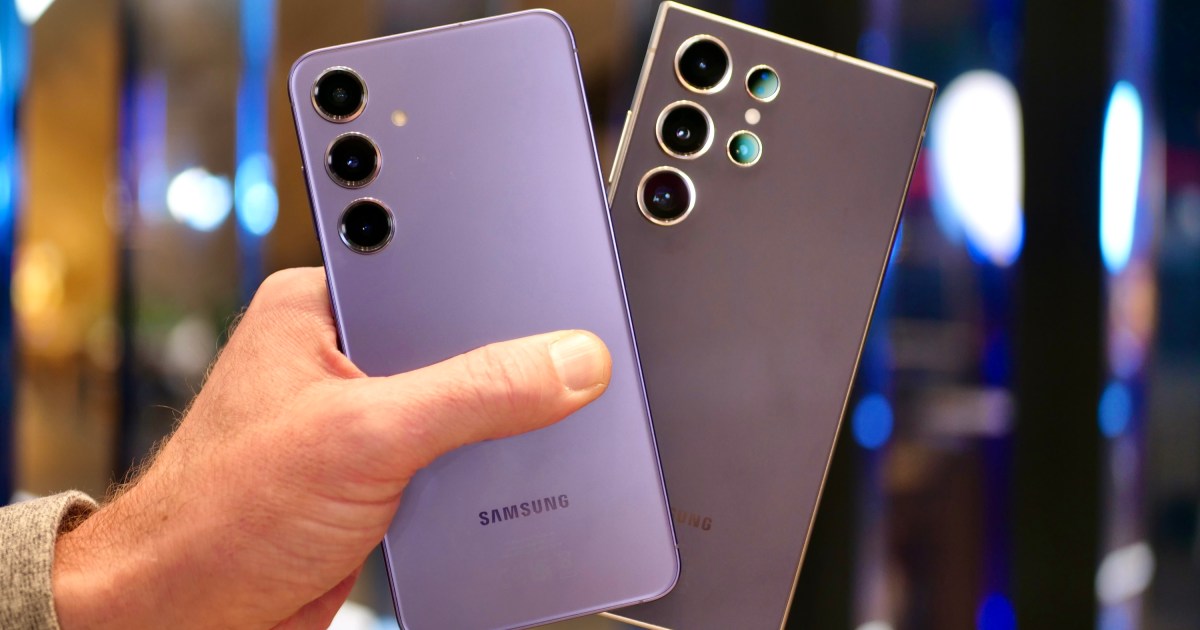
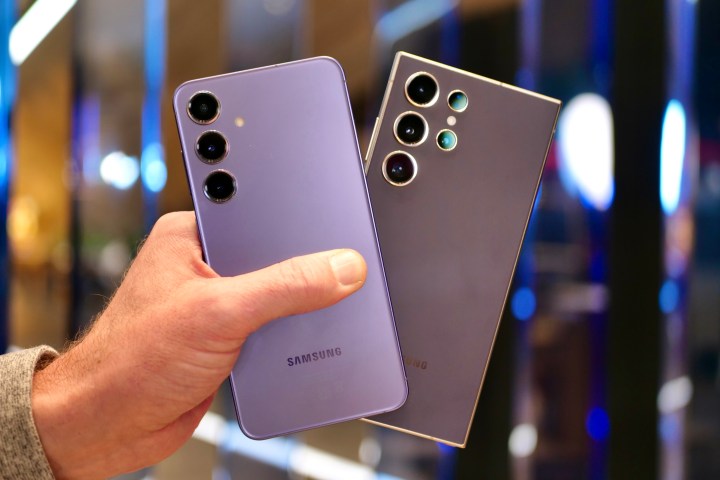
Andy Boxall / Digital Trends
Samsung is one of the most recognizable names in modern smartphones. It has a well-deserved reputation for offering an expansive lineup of great phones with something for just about everyone. This means if you’re looking for an Android phone, you’ll easily find a Samsung model that’s worth considering based on your needs and budget. In fact, the number of choices can be a bit overwhelming, but the good news is that we’ve explored the entire range and highlighted the best Samsung smartphones you can buy in 2024.
The Samsung Galaxy S24 Plus gets the nod for the best overall Samsung phone, and while it’s odd it’s not the ultra-premium S24 Ultra that takes the prize, that’s because Samsung has outdone itself this time around with the Plus model. The big phone has the same power, display, and Galaxy AI features as its larger sibling, with only a few small downsides that are easily balanced out by the $300 price difference. But if this year’s Plus doesn’t tickle your fancy, we have so many other great Samsung smartphones that one is sure to be perfect for you.
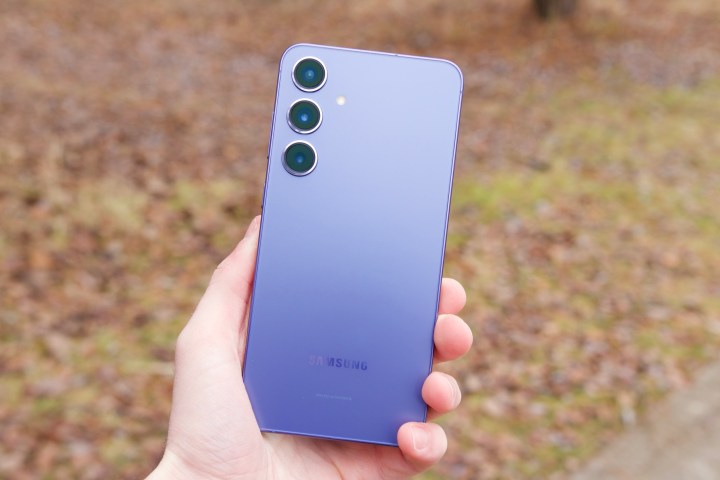
Joe Maring / Digital Trends
Samsung Galaxy S24 Plus
The best Samsung phone overall
Pros
- The flat sides are wonderful
- New QHD+ screen looks fantastic
- Runs fast and cool
- One UI 6.1 is really nice
- Seven years of updates
- Phenomenal battery life
- It’s a surprisingly good value
Cons
- Camera struggles with moving objects
- Galaxy AI features are hit-or-miss
Why you should buy this: It’s a surprise contender for the best phone of the year.
Who it’s for: Anyone who wants the best Samsung phone around, pound-for-pound.
Why we picked the Samsung Galaxy S24 Plus:
So, this was definitely a surprise. We were all set to crown the Galaxy S24 Ultra as this year’s best Samsung phone, but then the Samsung Galaxy S24 Plus came steaming into our lives. While you may expect the Plus entry to be the awkward middle child, 2024’s S24 Plus is simply one of the best phones you can buy, with a sublime design, powerful processor, phenomenal battery life, and gorgeous display.
Samsung has made some big tweaks to last year’s already great formula, and that’s the root of this year’s success. The most obvious changes are those made to the phone’s design. The S24 Plus’ flat sides have made the phone more comfortable to hold, added grip, and don’t pick up fingerprints. Samsung has also upgraded the phone’s display, and the 120Hz dynamic refresh rate now goes down to 1Hz, boosting battery life. It’s also brighter than before, and is capable of going up to 2,600 nits. The resolution has been upgraded too, going up to 1440p now.
Performance is as great as ever, thanks to the Qualcomm Snapdragon 8 Gen 3. Qualcomm’s flagship CPUs are as fast as ever, and are even a noticeable improvement over last year’s chip, giving the S24 Plus stupendously fast processing speeds. It doesn’t get hot, even when running punishing games like CoD: Mobile, and it’s also partly responsible for the Samsung Galaxy S24 Plus’ incredible battery life.
We’re used to flagship phones lasting about a day on a full charge, but the S24 Plus blows straight past it. After a demanding day with over four hours of screen time, the S24 Plus went to bed with 38% still in the tank. A more reasonable day saw it advance pretty happily into the second day, even with almost three hours of screen time. Pair this lengthy battery life with 45W fast charging, and you’ve got a phone that won’t spend a lot of time on the charger.
The big new addition this year is Galaxy AI, and while these features are interesting, they’re certainly not a reason to buy into the newest generation of Galaxy flagships. Many of them mirror similar AI-powered features on the Google Pixel 8 Pro, like the Magic Editor-like Generative Edit, and the Live Translate function. The message suggestions are just hilariously bad, with the offered changes coming out somewhere between an awkward robot and a flirty Mr Darcy.
The camera is one of the weakest parts of the phone, which is a big compliment to the phone as a whole, as it’s still very good. A 50-megapixel main camera joins a 12MP wide-angle camera and a 10MP telephoto with a 3x optical zoom, and it’s a great combination. Samsung seems to have tamed its saturation filters, so stills come out very well. But “stills” has never been more literal a description, as the camera really struggles with even the smallest amount of movement.
That fairly common issue being the most serious negative to a phone tells you everything you need to know: The Samsung Galaxy S24 Plus really is an excellent piece of technology, and the best overall Samsung smartphone. With prices starting from $1,000, it’s not as bank-breaking as the S24 Ultra, but offers the same level of high performance, and close to the same level of premium features.

Samsung Galaxy S24 Plus
The best Samsung phone overall

Andy Boxall / Digital Trends
Samsung Galaxy S24 Ultra
The best premium Samsung phone
Pros
- High performance processor
- Improved telephoto cameras
- Flatter screen aids S Pen use
- Battery will last two days
- Long software support
- Durable build and materials
- Circle to Search by Google
Cons
- Unfortunate price increase
- Speakers easily covered up
- Chat Assist is almost unusable
- Charging speeds are only average
Why you should buy this: It’s the pinnacle of Samsung’s smartphone creation.
Who it’s for: Someone who wants the most impressive Samsung smartphone, regardless of cost.
Why we picked the Samsung Galaxy S24 Ultra:
The S24 Plus may top this list, but there’s no way we’re going to leave the Samsung Galaxy S24 Ultra out. The Ultra is something of a testing ground for new features, and that makes the Ultra the biggest and most technologically advanced smartphone Samsung offers — even if that means it comes at a high price.
Like the Plus above, the S24 Ultra has had a few small design tweaks, but it’s still largely the same phone as last year. The Armor Aluminum frame has been replaced with titanium, and the sides and screen have been flattened slightly, making it easier to handle and use the S Pen on. It’s still a beast of a device, though — a real pocket-stretcher that you’ll need hefty forearms to use for a long period of time.
The screen’s peak brightness is now set at 2,600 nits, making it exceptionally bright. Not that the 6.8-inch display is hard to see, as the Dynamic AMOLED 2X tech means it’s bright and vivid, with some of the deepest inky blacks you can find on a smartphone. A 1440p resolution is available (though you have to change to it manually), and the dynamic refresh rate means your experience is buttery smooth when it needs to be, but not when it doesn’t. As with the S24 Plus above, performance is extremely swift thanks to the Snapdragon 8 Gen 3. It’s joined by 12GB of RAM and 256GB of storage as standard.
The camera system seems to have had a downgrade this year, dropping from a 10x optical zoom to 5x, but it’s actually better because of the change. Since a 5x zoom is actually a zoom level most people use, it’s a much better inclusion on the whole. The entire system comprises a 200MP main camera, a 12MP wide-angle camera, 10MP telephoto camera with a 3x optical zoom, and the aforementioned 50MP telephoto lens with a 5x zoom. It’s as excellent a camera system as you’d expect. Galaxy AI is here too, and it’s about as useful as it is in the S24 Plus — i.e., don’t expect too much of it.
There’s a 5,000mAh battery inside the massive frame, and it’s extremely long-lasting. During our time with it, it would regularly achieve five hours of screen time, and end the day with 50% remaining. You’ll have to use it for around a week for the phone to adapt to your usage, but once it has, it’ll deliver some excellent power efficiency. Charging times are good, with 45W fast charging available. It’s not the fastest charging available, but it’s also far from the slowest.
The Samsung Galaxy S24 Ultra is the most expensive phone in Samsung’s S-range lineup, but it’s also the most premium one you’ll find outside of foldable phones. As such, it has a price tag to match. The Galaxy S24 Ultra will set you back $1,300, and that’s before you expand your storage at all. On the plus side, you get an S Pen, which is kept inside the phone, but it’s still an expensive phone to buy. But if you want the best, this is it.

Samsung Galaxy S24 Ultra
The best premium Samsung phone

Christine Romero-Chan / Digital Trends
Samsung Galaxy S24
The best small Samsung phone
Pros
- Small and compact design
- The flat edges are great
- Beautiful and bright display
- Long lasting battery life
- Powerful performance
- Improved color balance in photos
- Useful Galaxy AI features
Cons
- Matte glass feels slippery
- No big camera upgrades
- Only 25W wired charging
Why you should buy this: It’s everything amazing about Samsung’s phones, but smaller.
Who it’s for: Someone who wants a more compact smartphone, but doesn’t want to compromise on performance.
Why we picked the Samsung Galaxy S24:
We can keep this one a little briefer than the other entries because a lot of what makes the Samsung Galaxy S24 great is also what makes the S24 Plus great. Well, except for one thing, of course — and that’s that the S24 is downright svelte when compared to its siblings.
It benefits from the same flat sides as the S24 Plus, with the added bonus that the body itself is even smaller, so even easier to handle. The 6.2-inch display uses LTPO tech in the Dynamic AMOLED 2X display, meaning it should be more power efficient than ever before, especially with an always-on display. Unlike the other entries in the range, though, it tops out at a 1080p resolution. However, it still has a 1-120Hz dynamic refresh rate and a peak brightness of 2,600 nits, so it’s easy enough to forgive the lower resolution.
It has the same Snapdragon 8 Gen 3 you’ll find in the two larger phones, so performance is just as good, and it also contains the new Galaxy AI. Once again, try these out, play with them a little bit, but don’t expect them to transform your smartphone experience forever. It’s just not there yet.
The camera system uses the same three lenses as the S24 Plus, and a lot of our criticisms of that phone apply to this one, too, with the additional downside that low-light photos can be a little bit underwhelming. But, still photographs look great, and Samsung has fixed its oversaturation problem, meaning photos no longer have an over-the-top color pop that’s just not realistic.
Charging speeds are lower than the S24 Plus and S24 Ultra, though, being limited to 25W. Thankfully, the battery is similarly good, with a solid day’s use from one charge.
Ultimately, a lot about this phone is very similar to the S24 Plus, with the exception of the size and the price. It’s the Samsung flagship to grab if a compact phone is a must, as the small size really doesn’t mean compromises have been made. Rather, it’s just as powerful, good-looking, and technically impressive as its larger siblings, and it’s a steal at $800.

Samsung Galaxy S24
The best small Samsung phone

Andy Boxall / Digital Trends
Samsung Galaxy Z Fold 6
The best foldable Samsung phone
Pros
- Fantastic folding design
- Refined size and weight
- IP48 water and dust resistance
- Two colorful, usable screens
- Main camera takes fun, vibrant photos
- Long software commitment
Cons
- Slow battery charging
- One-day battery life
- More expensive than last year
Why you should buy this: The Galaxy Z Fold 6 is a productivity buff’s dream, with its dual display, up to 1TB of storage, and robust, yet light Armor Aluminum frame.
Who it’s for: Anybody who wants a productivity punch and top-notch specs bundled into a foldable format.
Why we picked the Samsung Galaxy Z Fold 6:
The Galaxy Z Fold 6 is the best Samsung phone for productivity, with a foldable form factor and dual screens. Its front display measures 6.3 inches, just slightly larger than the Z Fold 5. Once you open it up, you get the full 7.6-inch main display with the series’ most seamless crease yet. Both screens reach up to a 120Hz refresh rate, too. You almost forget you’re using a smartphone instead of a mini tablet.
The Armor Aluminum frame and Gorilla Glass Victus 2 on the cover screen and back enhance durability while maintaining a sleek, comfortable hold. The IP48 rating also adds an additional layer of protection from dust and water. You can also add a special case for the S Pen, which you need to buy separately, but works wonderfully if you want to use the Z Fold 6 as a notepad.
The Z Fold 6 upgrades its processor to the Snapdragon 8 Gen 3, which provides a light performance boost and powers Samsung’s Galaxy AI. Many of its specs like its 12GB of RAM and up to 1TB of storage transfer over from the past generation. Meanwhile, AI now assists with tasks from translations to note-taking and shows up as generative AI in the camera and photo-editing apps. Speaking of which, the Z Fold 6 features the same 50MP main camera, a 12MP wide-angle lens, 10MP telephoto lens with 3x optical zoom, and 4MP Under Display Camera as its predecessor. It’s not a camera system that’ll dethrone the Galaxy S24 Ultra’s, but it’s still very, very good.
The Z Fold 6’s productivity is a double-edged sword. While it can juggle demanding tasks and seamlessly process them on a bright, foldable screen, those processes take a toll on its 4,400mAh battery. Two and a half hours of everyday usage already saps the energy down to 50%, even without playing games. It isn’t much of a problem, though, if you have portable batteries or alternative ways to charge while you’re outside of the house. It supports 25W wired charging and 15W wireless charging, but no charger in the box.
Samsung is set to support the Z Fold 6 with at least seven years of Android OS and security updates. The device runs on Android 14 OS with Samsung’s One UI 6.1.1, including the improved Taskbar that now displays up to four recent apps instead of two. The Taskbar is particularly useful for multitasking on the Z Fold 6, allowing users to drag apps onto the main screen. You can use up to three apps on the unfolded screen and add a fourth app as a floating window. You can also easily alter the shape and size of each app window and activate multitasking.
If you already have the Z Fold 5, it’s hard to recommend upgrading to a phone that’s almost the same. However, if you’re new to the foldable phone world, it offers plenty of pros as a smartphone that can basically double as a tablet.

Samsung Galaxy Z Fold 6
The best foldable Samsung phone

Joe Maring / Digital Trends
Samsung Galaxy Z Flip 6
The best Samsung flip phone
Pros
- Top-notch hardware
- IP48 dust and water resistance
- Very good inner display
- Fast, snappy performance
- New 50MP camera is great
- Seven years of updates
Cons
- Bad cover screen
- Slow charge speeds
- Frustrating price increase
- Extremely similar to the Flip 5
Why you should buy this: If you can afford a folding phone that costs over $1,000 right now, the Samsung Galaxy Z Flip 6 is the one you should buy.
Who it’s for: Those who simply must have the latest and most popular foldable.
Why we picked the Samsung Galaxy Z Flip 6:
There are several reasons why tech enthusiasts are buzzing about Samsung’s latest folding phone, the Galaxy Z Flip 6. For starters, it boasts an improved camera, a sturdier hinge construction, a newer and faster processor, and extended software support. On top of that, it features an overall sleek and elegant build that’s sure to turn heads. The Z Flip 6 offers a diverse palette of colors, including yellow, mint, blue, gray, peach, white, and “crafted black” — a black, textured colorway that makes monotone cool again.
When you flip the phone open, you’ll see the 6.7-inch AMOLED 2X display and its bright, pixel-perfect 2640 x 1080 screen. Its 2,600 nits of brightness can outshine daytime glare and the 120Hz refresh rate with VRR seamlessly plays videos and games. The cover screen is a 3.4-inch Super AMOLED that’s much more useful than previous models — it even allows you to run full Android apps. It almost makes up for the fact that its sluggish 60Hz refresh rate and fuzzy 720×748 resolution demystify the magic a bit.
The Galaxy Z Flip 6 upgrades to the Snapdragon Gen 3, the new standard in Samsung phones. However, that’s not the biggest improvement in this model. The Z Flip 6 ramps up the RAM to 12GB (the Galaxy Z Flip 5 had 8GB) and offers up 512GB of storage. Finally, it has the same amount of processing power as its larger foldable cousin, the Galaxy Z Fold 6. It also boasts the privilege of being the first Z Flip phone with a vapor chamber 50% larger than that in the S23 Ultra. As a result, it’s cool to touch, even under stress.
The Galaxy Z Flip 6 has a 4,000mAh battery, which is technically more than the Z Flip 5 but still isn’t enough to call it a two-day flip phone. If you’re fine with charging overnight, you’ll have more than enough juice to make it through an early morning to a late evening. It offers multiple charging options, including 25W wired charging, 15W wireless (including MagSafe), and 4.5W reverse wireless charging. It’s serviceable, but still the same as the Z Flip 5.
The 12MP ultrawide camera with a 123-degree field of view and 10 MP selfie camera on the Z Flip 6 match the specs on its predecessor. However, it does make a significant jump to its 50MP main camera from the 12MP on the Z Flip 5. It’s the same camera used in Galaxy S24 and S24 Plus phones, hailed as some of today’s best camera phones.
Other than that, it’s basically identical to last year’s model. To Samsung’s credit, the Z Flip 6 does feature upgrades to its cameras. The Snapdragon 8 Gen 2’s improved image signal processor provides better color reproduction, while the main and ultrawide cameras have a new “clear lens coating” to prevent lens flares. Its Android 14 OS and Samsung’s One UI 6.1.1 support are a strong start to its seven years of updates.

Samsung Galaxy Z Flip 6
The best Samsung flip phone
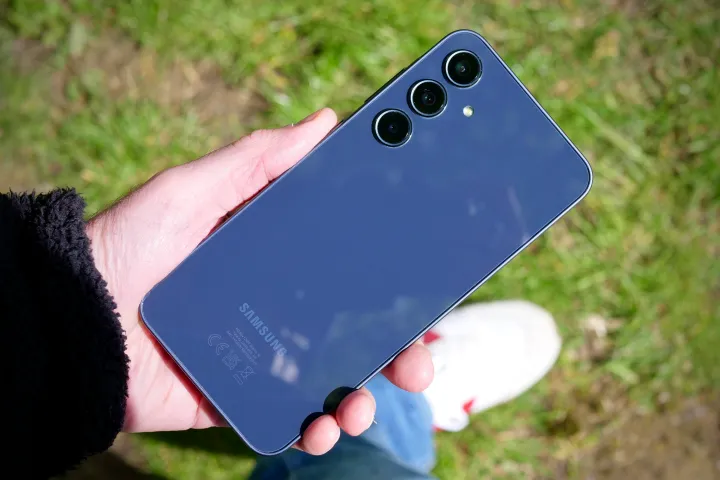
Andy Boxall / Digital Trends
Samsung Galaxy A35
The best value Samsung phone
Pros
- Light and comfortable to hold
- IP67 rating makes it durable
- Main camera takes fun photos
- Long software update commitment
Cons
- Battery doesn’t last two days
- No wireless or fast charging
Why you should buy this: It costs significantly less than the Galaxy S24 while still delivering a lovely display, decent cameras, and good performance.
Who it’s for: Anybody who wants a dependable smartphone for under $500.
Why we picked the Samsung Galaxy A35:
Samsung’s Galaxy S24 series is outstanding, as are its folding phones. But the truth is that a lot of people can’t afford those expensive handsets — and that’s why the Galaxy A35 is so important. You get many of the same features found on Samsung’s more expensive phones at a fraction of the price.
For starters, the Galaxy A35 still looks like its pricier Galaxy counterparts, even though its frame is made from plastic instead of aluminum. It only weighs 209g and measures 8.2mm thick, so it’s light and comfortable to hold and thin enough to slip into the average pocket. The IP67 rating also safeguards it from dust and water, though you shouldn’t take it for a dip at the pool anytime soon. It still features Gorilla Glass Victus over the front, but it has regular glass on the rear. I wouldn’t drop the phone on purpose to test the difference, but at least one side still benefits from the higher-quality material.
The Galaxy A35 sports a slightly larger screen than its predecessor, the Galaxy A34. The 6.6-inch Super AMOLED display delivers crisp text and strong, vibrant colors and reaches up to 1,000 nits of brightness with 2340×1080 resolution. Even more impressive is the 120Hz refresh rate that enables everything to feel fast and smooth. It’s mostly thanks to the Exynos 1380 processor and 8GB of RAM. The Galaxy A35 isn’t the fastest phone you’ll ever use, but it’s more than capable for anything you’d want to throw at it.
Despite the price, the Galaxy A35 also features a respectable 5,000mAh battery. One 30-minute YouTube video eats about 6% of battery life. Based on that, the battery can last over eight hours with just everyday use. It supports the USB Power Delivery 3.0 standard of 25W wired charging, which can take it from “flat to full” in 1 hour and 25 minutes or up to 50% in 40 minutes. Unfortunately, it doesn’t support wireless charging or fast charging.
What about the cameras? Well, the 50MP main camera isn’t the best we’ve ever seen, but for quick and casual photography, it gets the job done. It also tends to produce very bright and overly saturated photos, more so than its S24 cousins. It also has an 8MP wide-angle camera and fixed focus 5MP macro camera on the back, and a 13MP selfie camera is on the front. These cameras don’t take nearly as detailed photos as the main one, but they still take respectable photos when used with their strengths in mind. As a plus, the editing suite in the Gallery app is easy to use.
Does that mean pictures look lifelike and 1:1 accurate to the real world? Not exactly. But if you prefer your photos to have a real punch to them, the Galaxy A35 certainly delivers.
If you have more money to burn, a phone like the Galaxy S24 or Galaxy S24 Plus is going to deliver a better experience in every department. However, if $400 is the most you can spend, you’ll find very little to be disappointed about with the Galaxy A35.

Samsung Galaxy A35
The best value Samsung phone
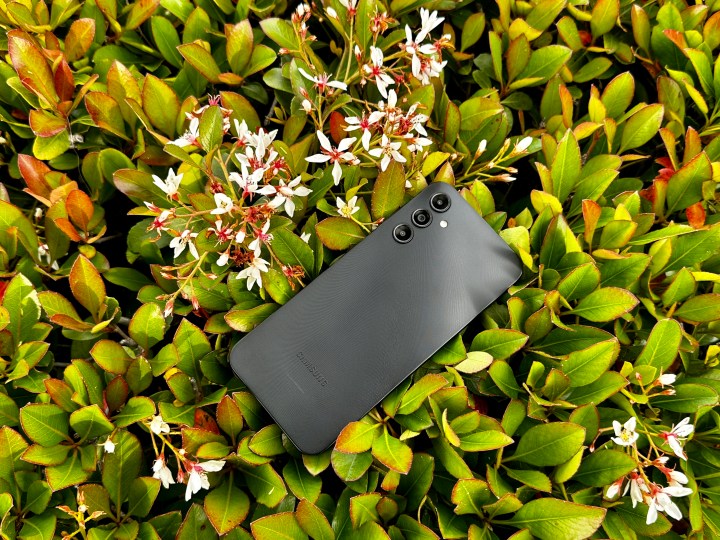
Christine Romero-Chan / Digital Trends
Samsung Galaxy A14 5G
The best cheap Samsung phone
Pros
- Only $200
- Large display with a 90Hz refresh rate
- 5,000mAh battery
- 50MP rear camera, 13MP selfie camera
- Respectable performance
- Unique, textured back
Cons
- Secondary cameras aren’t impressive
- No water or dust resistance
- Fast charging up to 15W only
Why you should buy this: It has no business being this good when it costs just $200.
Who it’s for: Anyone looking for a Samsung phone that doesn’t break the bank but still performs very well.
Why we picked the Samsung Galaxy A14 5G:
The $200 phone market is usually where you’ll find phones full of compromises. A low price often means harsh cost-cutting, and as a result, you’re unlikely to find something that can be described as “good”. That’s not the case with the Samsung Galaxy A14 5G, which is a true diamond in the rough.
You’ll struggle to define the A14 as a stunner, but it’s not a bad-looking smartphone. The body is made from plastic, but it has a unique texture that feels good and adds grip, something glass-bodied phones can struggle with. The display is worth pausing over, though. It’s a 6.6-inch LCD with a 1080p resolution, which isn’t bad by itself — but the inclusion of a 120Hz refresh rate definitely pushes this phone into a higher grade. There isn’t any water resistance, but hey, you can’t have everything, especially at this price.
It’s modestly powered by a MediaTek Dimensity 700 processor, the same chip from the A13. We found it stuttered a little during use, which reduced the smoothness of the 120Hz refresh rate, and it was sometimes sluggish to open apps, so make sure to clear out those running apps once in a while to keep it speedy. Storage starts from 64GB, which is relatively low these days, but there’s the option to use a microSD card to expand that by 1TB. It comes with Android 13, and Samsung has committed to two major Android updates and four years of security updates — a strong promise for a budget smartphone.
The main camera is impressive for a $200 smartphone. The main lens has a 50MP sensor, and it consistently took good, crisp images that are more than good enough for social media. Surprisingly for a cheap phone, it even takes clear night mode shots too. The second lens, a 2MP depth sensor, is there to assist the main camera in portrait shots, so it’s really technically a dual-lens system. Unfortunately, the third lens, a 2MP macro lens, continues the strong tradition of macro lenses being a bit rubbish, and it’s not one to rely on at all. Stick with the 50MP main lens instead, you’ll probably be pleasantly surprised by how good your shots are for a $200 smartphone.
The A14 has a 5,000mAh battery, and it’s capable of going for two days on a single charge. That’s helpful, as the charging rate is limited to 15W, so you’ll be wanting to leave it for a little while when charging. There’s no wireless charging, which makes sense on a phone this cheap.
The Samsung Galaxy A14 5G is available now, with prices starting from $200. As always, keep an eye on the sales, and you could snag this excellent phone for even cheaper. It’s available on all major U.S. carriers, though the U.S. only gets the rather boring plain black color.

Samsung Galaxy A14 5G
The best cheap Samsung phone
Technology
The Samsung Music Frame speaker is $150 off ahead of Black Friday
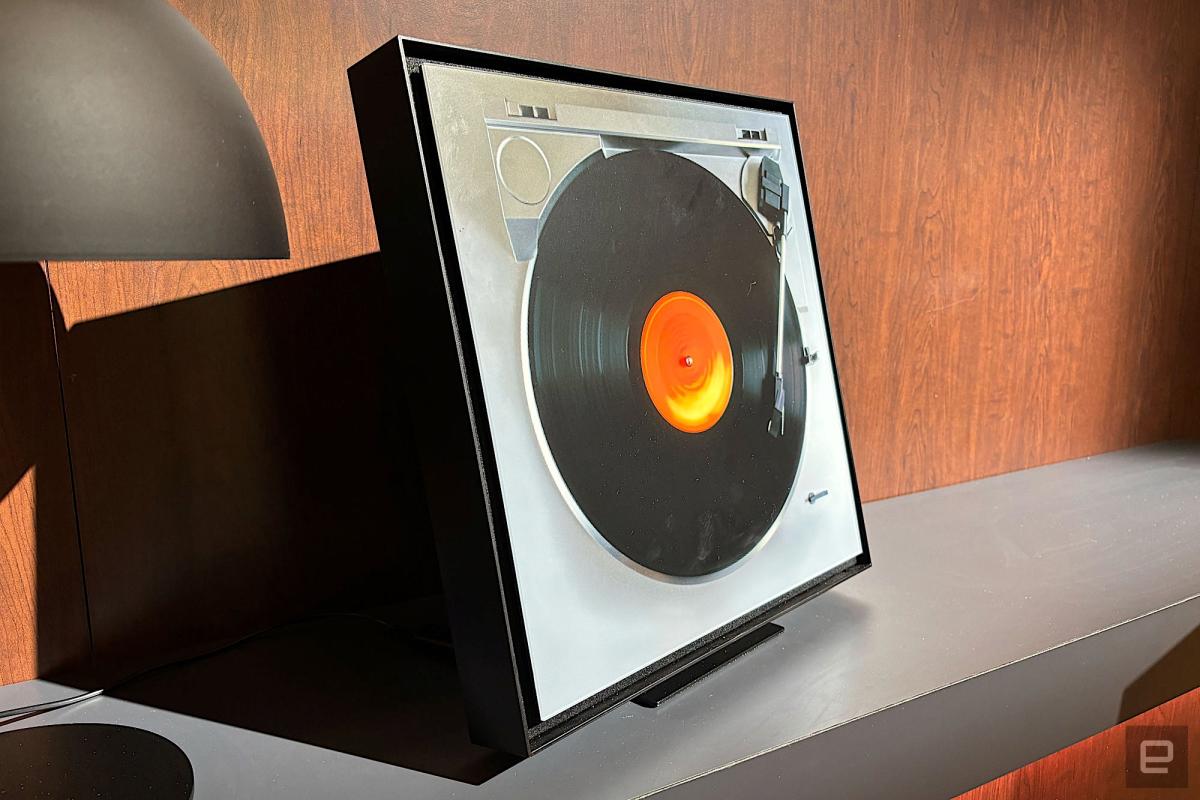
Black Friday may still be weeks away, but if you were hoping to score a deal on Samsung’s Music Frame, there’s no need to wait until Thanksgiving. Both Amazon and Samsung are currently selling the speaker for under $250. At $150 off its regular price, that’s an all-time low for the Music Frame, which will usually set you back $400. Considering Samsung only released the device earlier this year, this is a great opportunity to pick up one (or even two) for your home theater.
If you’re unfamiliar with the Music Frame, think of it as the speaker equivalent to Samsung’s popular Frame TV. Like its television counterpart, the Music Frame doubles as a piece of home decor. And while there’s no display that will automatically cycle through digital artwork, you can manually insert prints and photos. Moreover, while it’s certainly possible to pair two Music Frames with a Frame TV, it’s not limited to home theater use. The Music Frame works just fine as a standalone Wi-Fi and Bluetooth speaker. You can even use it as a smart home hub. It’s possible to mount the Music Frame on a wall or on a table, with the help of a built-in stand, if you prefer.
After a $150 discount, you can get Samsung’s Music Frame for under $250.
As for sound quality, Engadget senior reporter and resident audio geek Billy Steele was surprised by how good the Music Frame sounded when he got to demo it at CES earlier this year. “I was shocked by how robust and clear the overall sound quality is coming from the speaker,” he wrote at the time. “Highs and mids are adequately represented with great detail, while the bass is more restrained.“ If you’re curious, the Music Frame features two rear-facing woofers complemented by a set of two tweeters and two mid-range drivers, all four of which fire from the front of the speaker. It also offers Dolby Atmos support, and Samsung has included its SpaceFit tech, which assists with room calibration.
All told, the Music Frame is a great option for those looking for a speaker that will disappear into their home decor, but its high price can make it unappealing, especially if you want a stereo pair. At $150 off, however, it’s much easier to recommend, even if you’re on a budget.
Check out all of the latest Black Friday and Cyber Monday deals here.
Technology
For game job seekers, the search often leads outside of gaming
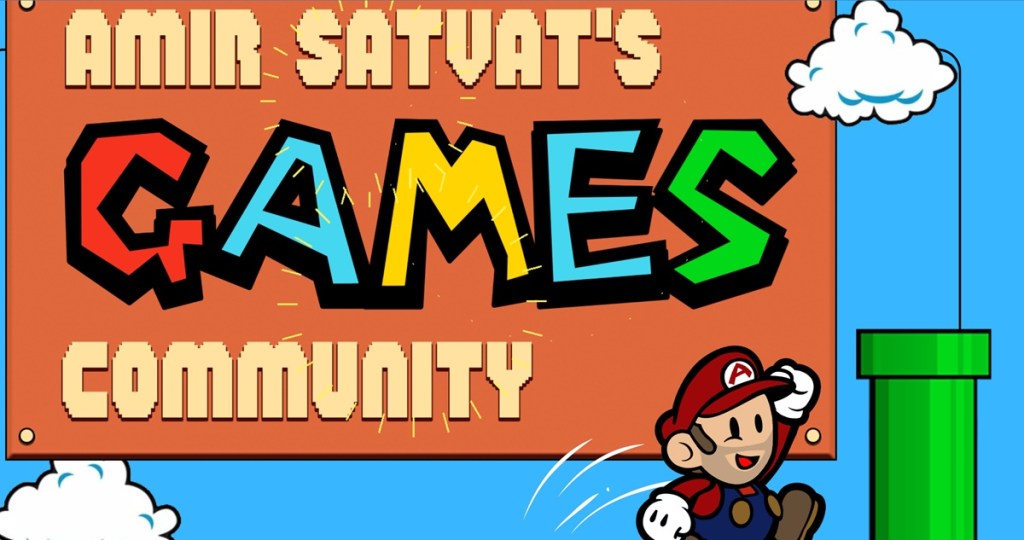
Amir Satvat has been churning out one study after another on the game job market, and his latest one shows that those seeking game jobs are often forced to take jobs outside the industry.
That’s not particularly good news for those job seekers, but the silver lining is that at least many of them find jobs.
In his latest report, there is more data that isn’t quite as bleak as it seemed before. Satvat, who works at Tencent in business development by day, has been providing game job resources by night to those who need it. And from that, he has gained more than 100,000 followers on LinkedIn and turned up a lot of data on game job seekers since November 2022. He now has about 22 months of solid data from that community.
One survey of 1,200-plus game people showed that on average they have 10% chance of finding a games job within 12 months. That’s better than previous data that showed the odds were about 7% to 8%. Those earlier numbers were lower as they only included people who said they were done with their search and are not underemployed or in contract work.
“I don’t release major findings until I’m confident they’re accurate, and with our community’s placements now surpassing 2,800, plus significant data on games job seekers (much of it retroactively collected), I now have a clearer picture of the games job search landscape,” Satvat said in a post.
Many things can affect a job search. In a panel at our GamesBeat Next 2024 event last week, Satvat noted that he didn’t find a job in the game industry until he was 38. Part of the reason was he would only take remote work in Connecticut, where he has family.
By month 22 of a job search, the odds of finding a games job reach 16%. And now, for the first time, Satvat said he has overall job search odds for game job seekers. This includes everyone in his community looking for a games role, not just those laid off.
The data show that many eventually broaden their search, particularly those who never worked in games to begin with. By month 12, the odds of finding any job are 54%. By comparison, the chances of game veterans finding a job in 12 months are one in four. And by month 22, the odds of finding any job for all game job seekers is 71%. This means that expanding your search beyond games significantly improves chances.
A lost generation?

You can improve your chances of finding any job by five times if you look outside of games. Much of the data in the community skews toward younger job seekers and game-focused job seekers. Satvat believes about a third of the 33,000 people laid off in games since 2022 are still job hunting.
At our event last week, Satvat said he worries there is a “lost generation” on both sides of the career arc. At the beginning, many graduating college students aren’t finding jobs in games. And for those 50 and older, ageism means that their odds of finding jobs are at 1% to 2% after a year of searching — just as bad as it is for those with less than three years of experience. It’s worth noting the odds improve for those who use Satvat’s 17 different job resources.
Satvat acknowledged that there are a small (and really unknown) number of people who turn a Roblox user-generated content gig into a full-time job. It may very well be that this has become the ground floor for getting jobs in the game industry.
Satvat noted that about 11,000 people were laid off in games in the first half of 2024, and the second half of the year it slowed down. He expects no more than 4,000 job cuts in the second half of 2024. He sees a crossover, where hiring will exceed firing on a 60-month trailing basis for the first time in years, happening in December.
This is why job placements are well below general unemployment – a big piece is those affected by the 32,000 cuts. We know a third of this population is still looking for work.
At months 16 and beyond, some job seekers may stop reporting due to discouragement and other factors.
“I’m cautious about overinterpreting the rate of increase here, but I believe the general pattern is accurate,” he said.
This data includes all job seekers aiming for roles in games, not only those with prior experience. Thus, not all of the gap between the blue and orange lines reflects an exodus. You can think of this gap as those who wish to work in games but can’t.
Why total job placement is only 71% over 22 months for gamers

In a follow-up post, Satvat said the biggest question he received since the post is why the 22-month total job odds for games jobseekers remain at only 71%.
“This is a complex issue, but I have some initial theories, based on both data and qualitative observations, which I plan to test thoroughly in the coming months,” he said.
He said one factor is that the percentage of games professionals who end up underemployed (in lower-paying roles that don’t cover living expenses), in fractional or contract work, or in other non-full-time roles (which I don’t count as off our still-searching list) has become a much larger part of the picture than people might expect.
There are some other reasons he is considering and will test for. He noted games qualifications, in many instances, are less transferable to other jobs than people think.
He noted that having only 14% of jobs in games as remote and a high geographic concentration – around 75% of North American roles being in just five states or regions – creates significant reemployment challenges.
Many in the community (he repeatedly tests at roughly a 50/50% mix for the members) aren’t open to relocating, and that further complicates reemployment. He also noted that there is ageism and early-career bias, which freezes out both newcomers to the market and those ages over 40 to 50-plus at higher rates than many realize.
“Some people are so passionate about games that, despite what they say, they’re reluctant to seriously pursue non-games roles,” he said.
In repeated surveys of his community and data collection, he said 45% of searchers have been out of work for a year or more. He also said he knows the number of games professionals laid off from 2022 through 2024 year to date, thanks to good reporting.
Based on the repeated community polls with thousands of responses, he knows that 30% to 40% of all laid-off games professionals were still looking for work as of two to three months ago.
And in a third post, Satvat asaid that, beyond just the odds of finding a job in games, he looked at the likelihood of securing any type of job for games job seekers.
Instead of only offering a “point-in-time” statistic for finding a job within 12 months, he attempted, for the first time, to chart the monthly odds offinding a games job, a non-games job, or any job over a span of one to 22 months.

The surprising takeaway that has gotten the most attention was that, over a 22-month period, the odds of games jobseekers finding any job was just 71%. He created some scenarios in a hypothetical chart.
He noted the figures below aren’t actual data points but serve as hypothetical examples. These scenarios reflect the kind of data he is continuing to refine, with the goal of making it more precise.
Imagine, hypothetically, that 15,000 people secure games jobs in 22 months. In healthier times, 25% of job seekers find roles in games, before recent layoffs.
With 60,000 games jobseekers, 15,000 find games jobs, while the other 45,000 need to find work outside of games. In more stable times, Satvat assumed 95% of people achieve full employment by month 22 – this means 42,750 find non-games roles, leaving 2,250 unfulfilled. In this scenario, the games industry and adjacent fields are absorbing enough talent to minimize slack.
Now consider a more stressed scenario: imagine an influx of 33,750 more jobseekers into the pool over three years – which is not hypothetical at all (some sources estimate 32,000, but Satvat believes it’s closer to 33,750).
If the same 15,000 games roles are available, the placement rate in games drops to 16%, leaving 78,750 games jobseekers. If we assume a hypothetical 71% of jobseekers find employment in 22 months, then 55,913 people secure non-games jobs, with 22,838 remaining without a role.
Over time, as job seekers become more flexible or shift markets, this “slack” could diminish, and one would see a return to the healthier scenario on top.
Again, these figures are illustrative, but they highlight why 71% is not surprising given the shock to the system. In normal times, the games placement rate over 22 months could be much higher.
Historically, the games industry averaged 1,000 to 2,000 layoffs a year, not 10,000-plus, so until recent years, the first scenario was more typical.
“I believe, and hope, that things will return to that norm sooner rather than later,” he said.
Source link
Technology
Printful and Printify ink a merger deal

Two veteran European companies in the world of on-demand printing are merging, and you may have not even realised they were separate companies to begin with. Printful and Printify, both startups with Latvian roots providing custom printing services, are coming together as a single company.
They are framing the move as a natural fit to unlock greater economies of scale, efficiencies and profitability. But reading between the lines, it also underscores the struggles that startups in the on-demand manufacturing space, and the creator economy, are facing as single companies. Funding for later-stage startups has been especially challenging in Europe over the last several years, and it looks like 2025 will be no exception. While category growth looks to have slowed vs earlier years: the two companies said they currently reach “hundreds of thousands” of customers.
Mergers typically aim to drive efficiencies through headcount reduction. Asked about layoffs, a spokesman for the pair said: “There will be some areas of overlap between the two companies and some changes to teams will take place. The company leadership will ensure that this process is clear, transparent and efficient.”
While the two existing brands will be maintained for the “foreseeable future”, per a press release, a new company name is planned — but is being kept under wraps for now. There will also be a new management team put in place, though both CEOs are slated to stay on. Also on the cards: new products — or “increasingly tailored and innovative solutions”, as their PR puts it.
Financial terms of the deal are not being disclosed.
The merged company said it plans to expand into more markets, serving everything from solo-entrepreneurs up to Fortune 500 companies wanting to be able to offer their own brand merch.
In terms of metrics, the companies are not providing like-for-like numbers. Printful says its business fulfils “more than a million” items a month, while Printify reports generating over 60 million orders since being founded almost a decade ago. Three years ago, Printify reported shipping a million units a month, although it’s not clear what its growth has looked like since then, so make of that what you will.
Printful was founded back in 2013 and has taken in $130 million in private equity funding, according to CrunchBase. Printify has raised a total of just over $54 million since being founded back in 2015. Investors include Index Ventures.
Commenting on the merger in a statement, Alex Saltonstall, Printful’s CEO, dubbed the development an “exciting moment for everyone”. Saltonstall has been in the job just over two years, following management changes after the original co-founder stepped back and took on an advisor role in summer 2022.
“Printify is a business that we have long respected and I believe that there is a natural fit between the two companies,” he said. “I’m excited to see our two great technology companies combine strengths and provide our customers with ever improving opportunities to fulfill their business goals.”
Printify’s CEO Anastasija Oleinika is even more relatively recently in post: she went from CFO to the top job in April 2023, when the founder moved to an exec chairman role. “Our combined company will give our merchants more,” she said in her statement. “More top-quality products, more places to sell, more innovative solutions, and more growth and profit.”
Consolidation can also be a strategy to drive up prices by reducing consumer choice — a tactic that private equity has been known to deploy — so it will be interesting to see whether claims of greater product choice translate into fewer and higher prices for the pair’s users in future, or see them ‘innovating’ to expand value for their customers, too.
The merger has already passed regulatory review, according to the companies, as well as receiving “overwhelming support” from both their shareholders. So it’s full steam ahead for Printfulify — or whatever the combined entity will be called.
Technology
Nintendo’s music app has great ideas and frustrating limitations
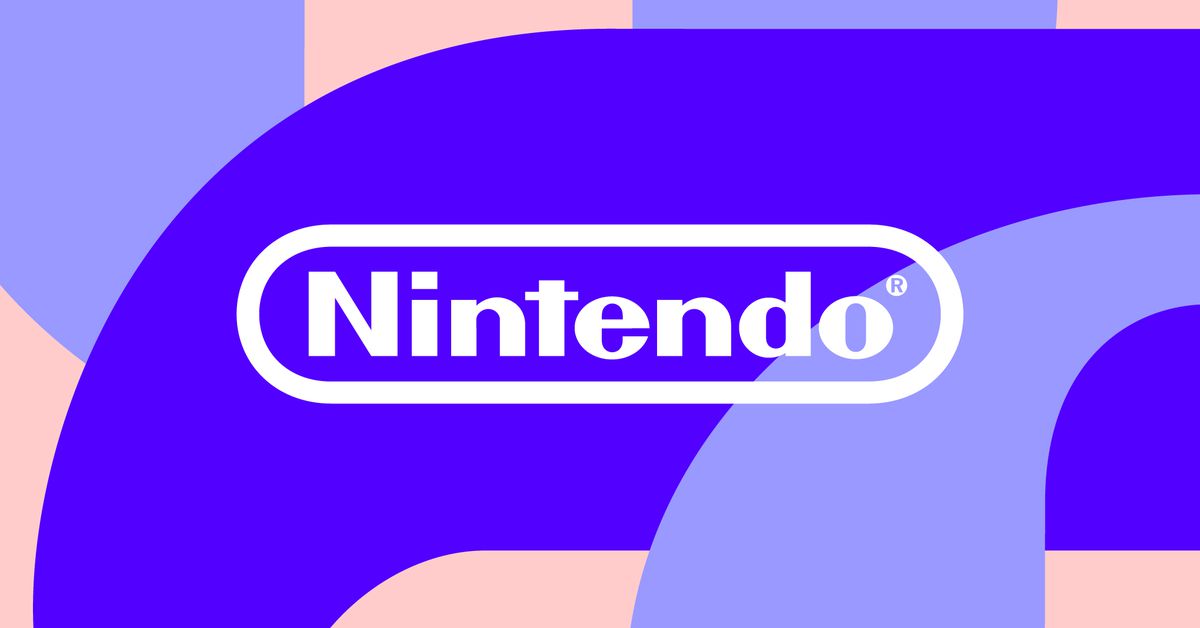
Navigating the app, which is available on iOS and Android but only accessible to Switch Online subscribers, feels a lot like other music services like Apple Music or Spotify. You can browse tracks from individual games or hand-curated playlists themed around things like characters, Pokémon battle songs, or tracks you might want to listen to on an extended loop. It’s organized in a thoughtful way on a per-game basis. The fictional bands in Splatoon 3 all get artist pages with bios. The page for Animal Crossing: New Horizons features playlists for K.K. Slider performances and instrumentals, and if you want to listen to a full playlist of Kapp’n’s sea shanties, that’s available, too.
The extended loop feature is my favorite part. For some songs, you can choose to extend them out to 15, 30, or 60 minutes. I’ve already used it quite a bit to work to music from The Legend of Zelda: Breath of the Wild; the calming piano sounds of “The Great Plateau” are still exquisite seven years later. I also like that you can add games to a “spoiler prevention” list to hide information about a game you might not have played yet, which could be a good way to keep yourself in the dark about a final boss for a game you might want to play.
There just aren’t many games on the app
But Nintendo Music doesn’t have many game soundtracks to listen to. Nintendo has more than 40 years’ worth of titles it could have included, and right now, there are only 25 games to pick from. There are just two Zelda games: Breath of the Wild and Ocarina of Time. Fire Emblem is the only Game Boy Advance game. There are three NES games, and two of them are Metroid. Technically, one of the “games” is Wii Channels music (which, to be fair, is full of bangers).
I could go on, but the point is that Nintendo Music isn’t a comprehensive collection of the company’s enormous musical history. Given that most of the soundtracks are for Nintendo Switch games, it’s more of a collection of Nintendo’s recent musical history, but it seems like a huge miss that I can’t listen to anything from Super Mario World in the app.
That will start to change, and probably slowly, if the drip-feed of Switch Online retro games is any indication. A day after the service launched, Nintendo added the soundtrack to Super Mario Bros. Wonder, and on Monday, Donkey Kong Country 2: Diddy’s Kong Quest became available, too. In the Nintendo Music reveal trailer, the company showed that Wii Sports, Super Mario 64, The Legend of Zelda: Skyward Sword, The Legend of Zelda: The Wind Waker, Splatoon 2, and F-Zero X are all set to arrive on the service, but only on a vague “over time” schedule.
Nintendo Music also doesn’t credit the real humans involved in making a song. That means, curiously enough, that the fictional bands in Splatoon 3 have more prominence in Nintendo Music than the legendary Koji Kondo. (Nintendo has kind of a weird thing about credits at the moment.)
The app has some other issues, too. You can’t extend some songs, and there’s no indication why, which is really annoying. One of the first songs I wanted to try the feature with was Metroid Prime’s soothing “Phendrana Drifts” music, but it’s not possible — which, given that it’s one of the main songs you hear on loop while exploring that area of the game, doesn’t make sense to me. Sure, you can just set the song to repeat, but that’s not quite the same as an hour-long extension. And when you select the duration of how long you want to extend a song, the whole song starts over; it’s a little thing, but I wish the app could just make the extension happen without the brief but jarring halt.
And disappointingly, Nintendo Music is currently only available on iOS and Android — there’s no desktop or web app. I’d really like to listen to Nintendo Music from a Mac app or in my desktop browser; it isn’t compatible with CarPlay or Android Auto, either.
For the songs that are currently available, Nintendo Music is great. But so much is missing that part of me wonders if Nintendo pushed this service out the door ahead of the launch of the successor to the Switch so that it could add to the service later. It’s a similar feeling to the frustrations with other recent not-Switch things from Nintendo, like the Alarmo clock and skin-deep Nintendo Museum; they all have good ideas but also some weird limitations.
Nintendo Music just isn’t as deep as I would like it to be. It means I’m going to have to keep tracking a lot of music down on YouTube.
Technology
The Call of Duty: Mobile five year anniversary kicks off with Season 10 launch and new battle royale map


- Call of Duty: Mobile Season 10 launches tomorrow
- The update includes a new weapon, battle royale map, and skins
- Call of Duty: Mobile has also hit one billion downloads worldwide
The fifth anniversary update for Call of Duty: Mobile arrives tomorrow, introducing a new season of content and an additional battle royale map.
Season 10 will introduce the new Anniversary Pass with both premium and paid tiers. Free players will be able to claim the all–new USS 9 SMG weapon, plus the brand-new Teleport battle royale class, a range of skins, weapon blueprints, Vault Coins, and more.
The Teleport class is equipped with a special beacon, which you can place and then teleport to from any point on the map.
Those who upgrade to the premium pass will be able to get their hands on new operator skins in addition to blueprints for the USS 9 and other weapons. A new Season 10 challenge pass will also be available via the in-game events tab, letting you earn challenge tokens and use them to purchase new skins, or complete Special Missions for special calling card unlocks.
The anniversary is also being marked by the addition of a new battle royale map, Krai. Krai is described as “a mid-sized map nestled in a valley at the base of the Ural Mountains” and seems to offer a good mix of both urban and rural combat environments. While playing on Krai, every operator is given one respawn and the option to come back into the game after that via a dropped dog tag that can be scanned by your squad.
Season 10 also contains plenty of new narrative content, with a special mission that follows Urban Tracker and Kumo-chan as they investigate Krai’s history, defeat enemies in combat, and complete mini-games to bypass security.
Publisher Activision has taken the opportunity to reveal that Call of Duty: Mobile has reached over one billion downloads worldwide since its release back in 2019. This is a huge milestone that most likely places Call of Duty: Mobile among some of the most downloaded mobile games of all time.
If you’re interested in giving it a go in time for the anniversary celebration, Call of Duty: Mobile is available as a free-to-play title on both Android and iOS.
You might also like
Technology
3D printing with light and sound could let us copy human organs

A rapid form of 3D printing that uses sound and light could one day produce copies of human organs made from a person’s own cells, allowing for a range of drug tests.
Traditional 3D printers build from a hard base, layer by layer. This is time consuming and risks damage to printed objects when they are removed from the printing bed. David Collins at the University of Melbourne and his colleagues have taken a different approach, which they call “dynamic interface printing”.
The new printer is essentially a…
-

 Science & Environment2 months ago
Science & Environment2 months agoHow to unsnarl a tangle of threads, according to physics
-

 Technology1 month ago
Technology1 month agoIs sharing your smartphone PIN part of a healthy relationship?
-

 Science & Environment2 months ago
Science & Environment2 months ago‘Running of the bulls’ festival crowds move like charged particles
-

 Science & Environment2 months ago
Science & Environment2 months agoHyperelastic gel is one of the stretchiest materials known to science
-

 Technology2 months ago
Technology2 months agoWould-be reality TV contestants ‘not looking real’
-

 Science & Environment1 month ago
Science & Environment1 month agoX-rays reveal half-billion-year-old insect ancestor
-

 Science & Environment2 months ago
Science & Environment2 months agoMaxwell’s demon charges quantum batteries inside of a quantum computer
-

 Money1 month ago
Money1 month agoWetherspoons issues update on closures – see the full list of five still at risk and 26 gone for good
-

 Science & Environment2 months ago
Science & Environment2 months agoSunlight-trapping device can generate temperatures over 1000°C
-

 Science & Environment2 months ago
Science & Environment2 months agoPhysicists have worked out how to melt any material
-

 Sport1 month ago
Sport1 month agoAaron Ramsdale: Southampton goalkeeper left Arsenal for more game time
-

 Technology1 month ago
Technology1 month agoGmail gets redesigned summary cards with more data & features
-

 Football1 month ago
Football1 month agoRangers & Celtic ready for first SWPL derby showdown
-

 MMA1 month ago
MMA1 month ago‘Dirt decision’: Conor McGregor, pros react to Jose Aldo’s razor-thin loss at UFC 307
-

 Technology1 month ago
Technology1 month agoUkraine is using AI to manage the removal of Russian landmines
-

 Sport1 month ago
Sport1 month agoBoxing: World champion Nick Ball set for Liverpool homecoming against Ronny Rios
-

 Science & Environment2 months ago
Science & Environment2 months agoLaser helps turn an electron into a coil of mass and charge
-

 Technology1 month ago
Technology1 month agoEpic Games CEO Tim Sweeney renews blast at ‘gatekeeper’ platform owners
-

 News1 month ago
News1 month agoWoman who died of cancer ‘was misdiagnosed on phone call with GP’
-

 Science & Environment2 months ago
Science & Environment2 months agoA new kind of experiment at the Large Hadron Collider could unravel quantum reality
-

 Technology1 month ago
Technology1 month agoRussia is building ground-based kamikaze robots out of old hoverboards
-

 Technology1 month ago
Technology1 month agoSamsung Passkeys will work with Samsung’s smart home devices
-

 MMA1 month ago
MMA1 month agoDana White’s Contender Series 74 recap, analysis, winner grades
-

 News1 month ago
News1 month ago‘Blacks for Trump’ and Pennsylvania progressives play for undecided voters
-

 Science & Environment2 months ago
Science & Environment2 months agoQuantum ‘supersolid’ matter stirred using magnets
-

 Science & Environment2 months ago
Science & Environment2 months agoLiquid crystals could improve quantum communication devices
-
Business1 month ago
how UniCredit built its Commerzbank stake
-

 Technology1 month ago
Technology1 month agoMicrosoft just dropped Drasi, and it could change how we handle big data
-

 MMA4 weeks ago
MMA4 weeks ago‘Uncrowned queen’ Kayla Harrison tastes blood, wants UFC title run
-

 Science & Environment2 months ago
Science & Environment2 months agoWhy this is a golden age for life to thrive across the universe
-

 News1 month ago
News1 month agoRwanda restricts funeral sizes following outbreak
-

 Technology1 month ago
Technology1 month agoCheck, Remote, and Gusto discuss the future of work at Disrupt 2024
-

 News1 month ago
News1 month agoNavigating the News Void: Opportunities for Revitalization
-

 Sport1 month ago
Sport1 month ago2024 ICC Women’s T20 World Cup: Pakistan beat Sri Lanka
-

 TV1 month ago
TV1 month agoসারাদেশে দিনব্যাপী বৃষ্টির পূর্বাভাস; সমুদ্রবন্দরে ৩ নম্বর সংকেত | Weather Today | Jamuna TV
-

 MMA1 month ago
MMA1 month agoPereira vs. Rountree prediction: Champ chases legend status
-

 News1 month ago
News1 month agoMassive blasts in Beirut after renewed Israeli air strikes
-

 Entertainment1 month ago
Entertainment1 month agoBruce Springsteen endorses Harris, calls Trump “most dangerous candidate for president in my lifetime”
-

 Technology1 month ago
Technology1 month agoWhy Machines Learn: A clever primer makes sense of what makes AI possible
-

 Technology1 month ago
Technology1 month agoMicrophone made of atom-thick graphene could be used in smartphones
-

 News1 month ago
News1 month agoCornell is about to deport a student over Palestine activism
-

 Business1 month ago
Business1 month agoWhen to tip and when not to tip
-

 Business1 month ago
Business1 month agoWater companies ‘failing to address customers’ concerns’
-

 Sport1 month ago
Sport1 month agoWXV1: Canada 21-8 Ireland – Hosts make it two wins from two
-

 MMA1 month ago
MMA1 month agoKayla Harrison gets involved in nasty war of words with Julianna Pena and Ketlen Vieira
-

 Football1 month ago
Football1 month ago'Rangers outclassed and outplayed as Hearts stop rot'
-

 Science & Environment2 months ago
Science & Environment2 months agoQuantum forces used to automatically assemble tiny device
-

 Science & Environment2 months ago
Science & Environment2 months agoITER: Is the world’s biggest fusion experiment dead after new delay to 2035?
-

 News2 months ago
News2 months ago▶️ Hamas in the West Bank: Rising Support and Deadly Attacks You Might Not Know About
-

 Science & Environment2 months ago
Science & Environment2 months agoNuclear fusion experiment overcomes two key operating hurdles
-
Business1 month ago
Top shale boss says US ‘unusually vulnerable’ to Middle East oil shock
-

 Technology1 month ago
Technology1 month agoSingleStore’s BryteFlow acquisition targets data integration
-

 Sport1 month ago
Sport1 month agoChina Open: Carlos Alcaraz recovers to beat Jannik Sinner in dramatic final
-

 Football1 month ago
Football1 month agoWhy does Prince William support Aston Villa?
-

 News1 month ago
News1 month agoHull KR 10-8 Warrington Wolves – Robins reach first Super League Grand Final
-

 News1 month ago
News1 month ago▶ Hamas Spent $1B on Tunnels Instead of Investing in a Future for Gaza’s People
-

 Technology1 month ago
Technology1 month agoMusk faces SEC questions over X takeover
-

 Sport1 month ago
Sport1 month agoPremiership Women’s Rugby: Exeter Chiefs boss unhappy with WXV clash
-

 Sport1 month ago
Sport1 month agoCoco Gauff stages superb comeback to reach China Open final
-

 Science & Environment2 months ago
Science & Environment2 months agoA slight curve helps rocks make the biggest splash
-

 Technology2 months ago
Technology2 months agoMeta has a major opportunity to win the AI hardware race
-

 Womens Workouts1 month ago
Womens Workouts1 month ago3 Day Full Body Women’s Dumbbell Only Workout
-

 Technology1 month ago
Technology1 month agoUniversity examiners fail to spot ChatGPT answers in real-world test
-
Business1 month ago
Bank of England warns of ‘future stress’ from hedge fund bets against US Treasuries
-

 Technology1 month ago
Technology1 month agoLG C4 OLED smart TVs hit record-low prices ahead of Prime Day
-

 MMA1 month ago
MMA1 month ago‘I was fighting on automatic pilot’ at UFC 306
-

 Sport1 month ago
Sport1 month agoShanghai Masters: Jannik Sinner and Carlos Alcaraz win openers
-

 News1 month ago
News1 month agoGerman Car Company Declares Bankruptcy – 200 Employees Lose Their Jobs
-

 Sport1 month ago
Sport1 month agoWales fall to second loss of WXV against Italy
-
Business1 month ago
DoJ accuses Donald Trump of ‘private criminal effort’ to overturn 2020 election
-
Business1 month ago
Sterling slides after Bailey says BoE could be ‘a bit more aggressive’ on rates
-

 TV1 month ago
TV1 month agoTV Patrol Express September 26, 2024
-

 Sport1 month ago
Sport1 month agoSturm Graz: How Austrians ended Red Bull’s title dominance
-

 Money4 weeks ago
Money4 weeks agoTiny clue on edge of £1 coin that makes it worth 2500 times its face value – do you have one lurking in your change?
-

 Science & Environment2 months ago
Science & Environment2 months agoTime travel sci-fi novel is a rip-roaringly good thought experiment
-

 MMA1 month ago
MMA1 month agoPennington vs. Peña pick: Can ex-champ recapture title?
-

 MMA1 month ago
MMA1 month agoKetlen Vieira vs. Kayla Harrison pick, start time, odds: UFC 307
-

 Technology1 month ago
Technology1 month agoThe best shows on Max (formerly HBO Max) right now
-

 Technology1 month ago
Technology1 month agoIf you’ve ever considered smart glasses, this Amazon deal is for you
-

 Technology1 month ago
Technology1 month agoJ.B. Hunt and UP.Labs launch venture lab to build logistics startups
-
Travel1 month ago
World of Hyatt welcomes iconic lifestyle brand in latest partnership
-

 Technology1 month ago
Technology1 month agoQuoroom acquires Investory to scale up its capital-raising platform for startups
-
Business1 month ago
The search for Japan’s ‘lost’ art
-

 Sport1 month ago
Sport1 month agoNew Zealand v England in WXV: Black Ferns not ‘invincible’ before game
-

 Sport1 month ago
Sport1 month agoMan City ask for Premier League season to be DELAYED as Pep Guardiola escalates fixture pile-up row
-

 News2 months ago
News2 months ago▶️ Media Bias: How They Spin Attack on Hezbollah and Ignore the Reality
-

 Science & Environment2 months ago
Science & Environment2 months agoNerve fibres in the brain could generate quantum entanglement
-

 Technology1 month ago
Technology1 month agoAmazon’s Ring just doubled the price of its alarm monitoring service for grandfathered customers
-

 News1 month ago
News1 month agoTrump returns to Pennsylvania for rally at site of assassination attempt
-

 Technology4 weeks ago
Technology4 weeks agoThe FBI secretly created an Ethereum token to investigate crypto fraud
-

 Science & Environment2 months ago
Science & Environment2 months agoHow to wrap your mind around the real multiverse
-

 Business1 month ago
Business1 month agoStocks Tumble in Japan After Party’s Election of New Prime Minister
-

 Technology1 month ago
Technology1 month agoTexas is suing TikTok for allegedly violating its new child privacy law
-

 Technology1 month ago
Technology1 month agoOpenAI secured more billions, but there’s still capital left for other startups
-
Business1 month ago
‘Let’s be more normal’ — and rival Tory strategies
-

 News1 month ago
News1 month agoHarry vs Sun publisher: ‘Two obdurate but well-resourced armies’
-

 News1 month ago
News1 month agoFamily plans to honor hurricane victim using logs from fallen tree that killed him
-

 Money1 month ago
Money1 month agoPub selling Britain’s ‘CHEAPEST’ pints for just £2.60 – but you’ll have to follow super-strict rules to get in
-

 Sport1 month ago
Sport1 month agoURC: Munster 23-0 Ospreys – hosts enjoy second win of season
-

 Entertainment1 month ago
Entertainment1 month agoNew documentary explores actor Christopher Reeve’s life and legacy

You must be logged in to post a comment Login